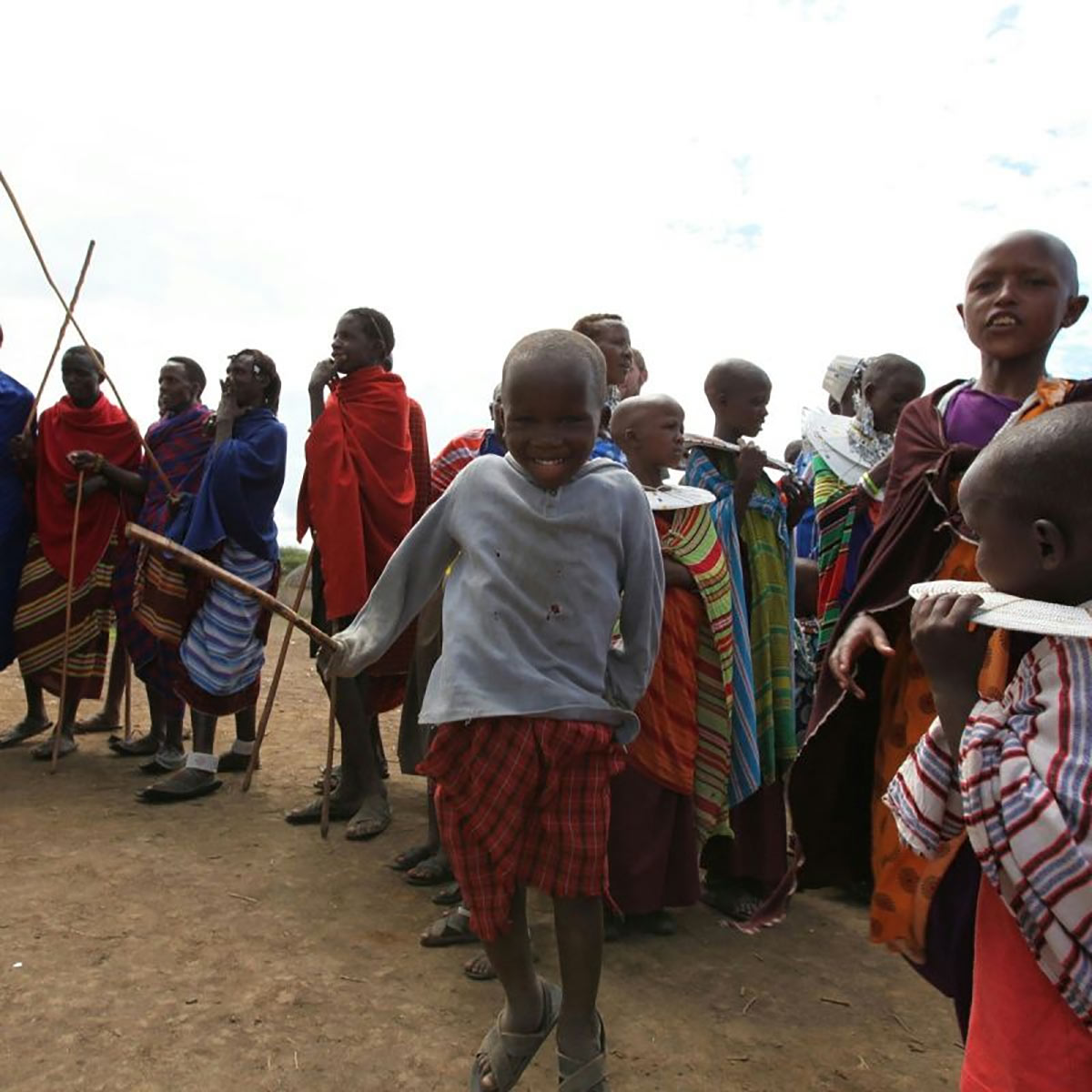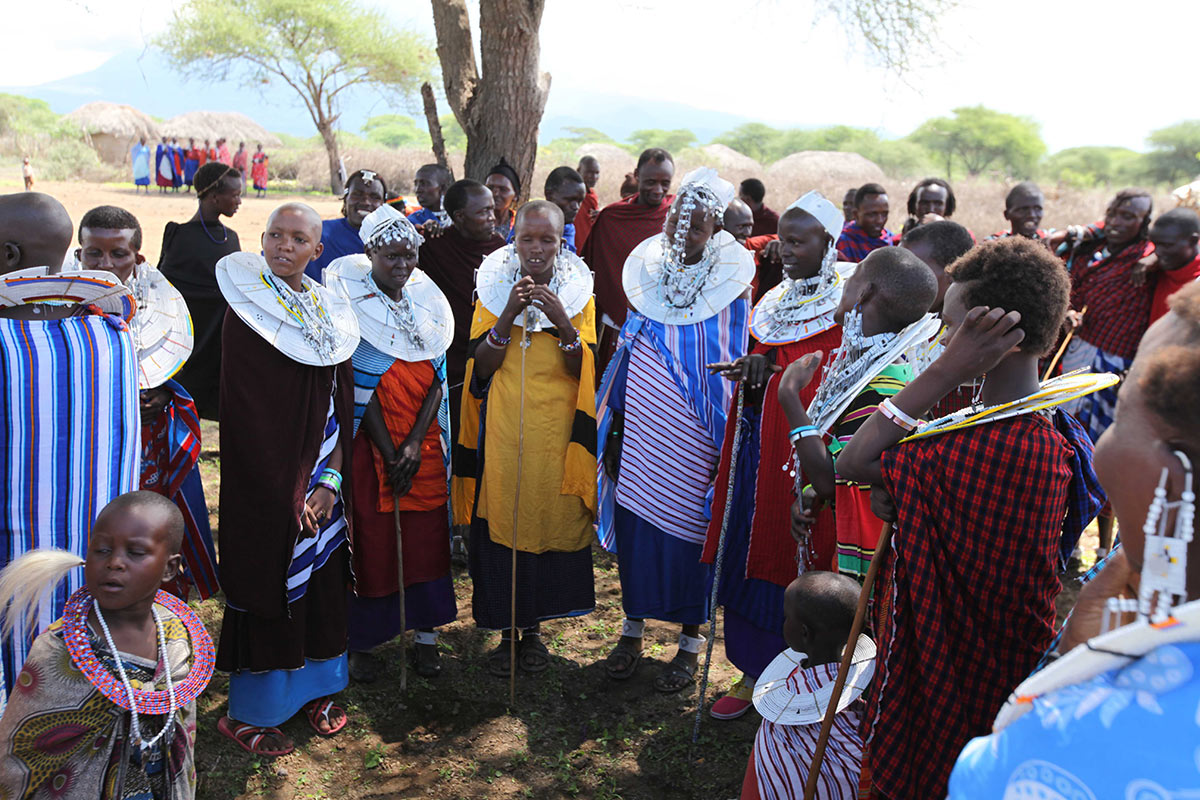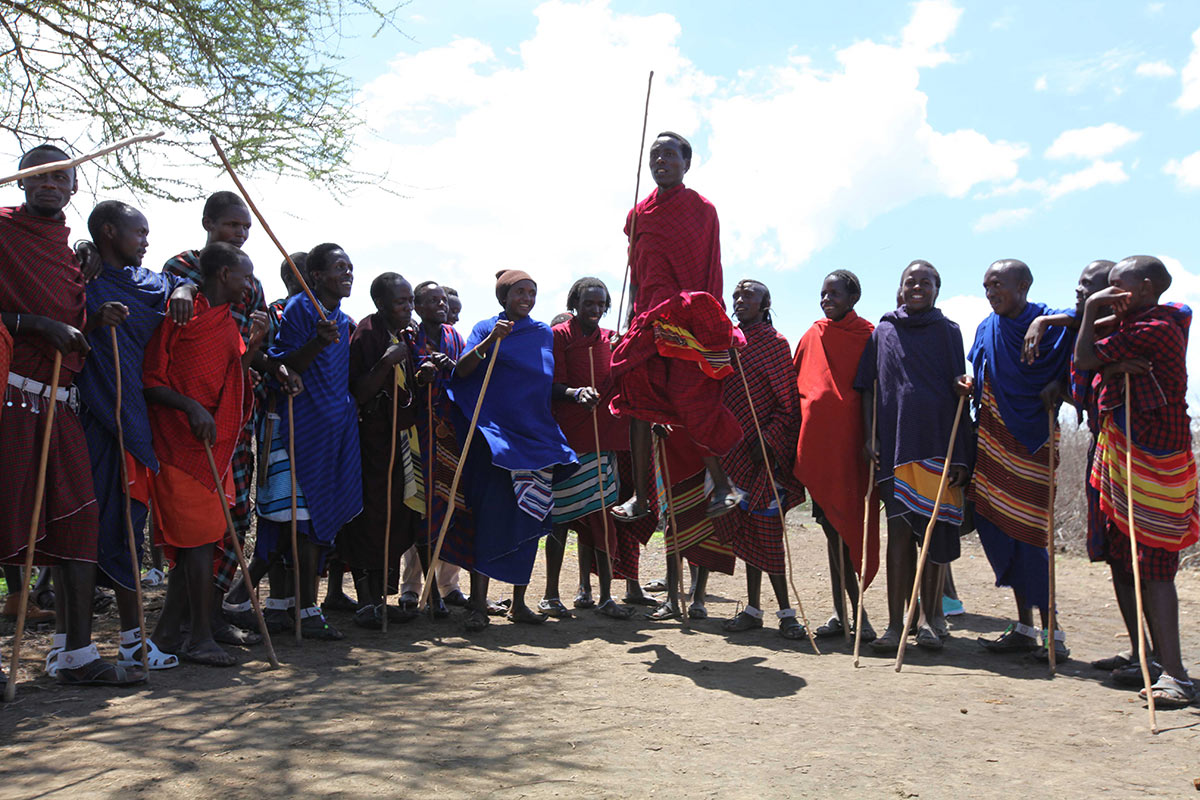Where can I meet the Maasai?

One of Africa’s most iconic tribes, the Maasai live a semi-nomadic lifestyle in Northern Tanzania and Southern Kenya. The tribe has modernized in some ways (at times by government force, at times by convenience), but still practice many aspects of their traditional culture. The Maasai have held onto their identity as warriors and livestock herders, while their cultural dance, clothing, and handiwork is known worldwide. If you’re wondering “Where can I meet the Maasai?” one of the best ways to visit them is on safari, where you can see and learn about their lifestyle directly.
Where Do The Maasai Live?
The Maasai people are a Nilotic ethnic group located primarily in Kenya and Tanzania. They are known for their distinctive cultural practices, including their traditional clothing, jewelry, and cattle herding lifestyle. The Maasai are famous for their vibrant red clothing, which is typically made from traditional shuka fabric. They have managed to preserve much of their traditional way of life despite modernization and globalization.
The Heirachy of a Maasai Tibe
The hierarchy within the Maasai tribe is traditionally structured around age sets, with each stage of life having its own roles, responsibilities, and privileges. Here is a basic outline of the traditional hierarchy:
Elders: Elders hold significant authority within the Maasai community. They are respected for their wisdom, experience, and knowledge of Maasai traditions. Elders often serve as advisors and decision-makers within the community.
Warriors: Young men who have undergone the initiation rites and have entered into the warrior stage hold a prominent position in Maasai society. They are responsible for protecting the community, herding cattle, and participating in rituals and ceremonies.
Moran: The warrior stage is followed by the moran stage, during which young men continue their training and preparation for leadership roles within the community. This stage is characterized by rituals, ceremonies, and communal activities.
Women: While not explicitly part of a hierarchical structure in the same way as men, women play essential roles within Maasai society. They are responsible for domestic tasks, childcare, and often have a significant influence within the family and community.
Children: Children are valued members of the community and are raised with a strong emphasis on Maasai cultural values, traditions, and responsibilities.
NOTE: It’s important to note that while these roles and stages provide a general framework, the hierarchy within the Maasai tribe can vary somewhat depending on specific circumstances and local customs. Additionally, modernization and outside influences have also impacted traditional Maasai social structures to some extent.

A Celebration for All Ages
History & Modern Life of The Maasai Tribe
Who are the Maasai people? The Maasai have inhabited Northern Tanzania and Southern Kenya since the mid 17th century, but being a semi-nomadic tribe, they haven’t always lived there. The Maasai came out of Northwest Kenya in the 15th century, and began a nomadic journey south, presumably to find better grazing land for their livestock. As they moved across Africa, many established ethnic groups were displaced by or assimilated to the Maasai society, solidifying their reputation as warriors. Since they settled in an area renowned for its stunning natural wonders and diverse wildlife, the governments in Tanzania and Kenya have repeatedly pushed the Maasai out of national park areas as they develop, and urged them to assimilate to modern society. Instead, the Maasai demanded grazing rights to the land and continue to live near the parks.
Because the Maasai are traditionally livestock herders, they move their animals along with the seasons to find fresh grazing land. Historically, cattle is the main source of sustenance, but the Maasai have branched out into farming due to necessity. Also known as fierce warriors, they protect livestock from predators and defend the “kraals,” a circular structure where tribe members live. For women, life in this patriarchal society requires that they build the houses, look after children, and take care of the home. Though some of the Maasai have left their traditional lifestyle to join modern civilization, those who remain keep many of their cultural occupations and roles intact.
Not only have they maintained their occupations for centuries, they also have continued their cultural traditions as well. The Maasai are known worldwide for their unique style of dress, body adornment, and beadwork. Each tribe has a unique style of beadwork, and this coveted craft has been featured in art galleries across the United States. Another highlight of going to meet the Maasai is seeing (and participating in) the traditional Adumu, or “jumping dance,” performed by the warriors. Seeing the beauty in this unique culture is certainly a feast for the senses.

Maasai dance movies
As they state on the Tanzania Serengeti Great Migration Safari to The Maasai Community Development Initiative. Think of going to meet the Maasai on safari as an experience that you’ll never forget, and an opportunity to help others.



